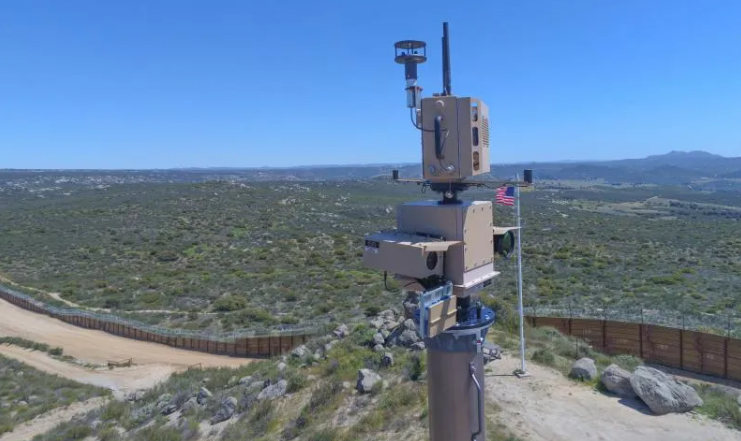The U.S. border tech surge is reshaping security with cutting-edge tools. Today, the southern border hums with advanced systems, while new legislation pushes for even more innovation. The Emerging Innovative Border Technologies Act, passed with bipartisan support on March 11, 2025, demands a plan to weave AI, drones, and sensors into border patrol operations. Meanwhile, existing tech already tracks movement with precision. But at what cost to privacy and budgets? This report dives into the reality, efficiency, and stakes of this high-tech frontier.
Border Security Today: High-Tech Reality Unveiled
Customs and Border Protection (CBP) deploys solar-powered towers with AI that spots humans with 97% accuracy. Drones patrol skies, and ground sensors alert agents to crossings. The new act, led by Representatives Correa and Luttrell, pushes for more—think machine learning and nanotechnology. These tools aim to curb drugs and trafficking while speeding up trade.
“Border security means keeping drugs and other negative elements away from our communities, as well as utilizing cutting-edge technology that is already available to maintain trade and commerce and give our hard-working officers the tools they need to keep us safe,” Correa said. “With this bipartisan effort, Congress will better-understand how our officers can use new technology to stop the fentanyl trade. I look forward to seeing this legislation pass the United States Senate and make its way to President Trump’s desk.”
“Securing our border requires more than just manpower — it requires cutting-edge technology that gives our agents the tools they need to stay ahead of the threats we face. This bill passing the House with strong bipartisan support shows that securing our border isn’t a partisan issue, it’s a national security priority,” Luttrell said. “I’m proud to work alongside Congressman Correa to find solutions to enhance the safety of Americans. Now, it’s time for the Senate to take this up and send it on to President Trump to be signed into law.”
However, electrified walls and public feeds remain absent. Still, the tech foundation exists, setting the stage for a bold leap.
Efficiency Gains: Border Tech’s Promise
Advanced border tech could streamline patrols. CBP’s 175 autonomous towers already guide agents with GPS precision.

CBP first piloted the towers in early 2018 with four towers in the San Diego Border Patrol Sector, and has since procured 56 additional towers. CBP is on a path to procure and deploy 140 additional towers in Fiscal Years 2021 and 2022, to reach a total of 200 towers.
Drones and 180-degree cameras could cut response times further. In 2019, Tucson saw 40,000 illegal crossings—smarter tech might slash that number. AI helps agents focus on threats, not wildlife. The new legislation backs this by forming CBP Innovation Teams to adapt commercial tech fast. Yet, success hinges on flawless execution.
Costly Border Tech: Worth the Price?
This tech surge isn’t cheap. Surveillance systems cost $100 million in 2019, and scaling up could hit $500 million. The act requires a plan within 180 days to justify expenses. Solar power saves long-term, and jobs in tech could grow. But past failures, like the $1 billion SBINet flop, loom large. If crossings drop, the investment might pay off. Critics, however, warn of ethical risks, as tech could push migrants to dangerous routes.
Border Tech’s Trade-Offs: Gain or Loss?
Smart tech beats physical walls financially. A “smart wall” costs $500,000 per mile versus $24.5 million for concrete. Drones and sensors could save billions. The act’s push for AI image recognition might catch drugs at ports. Yet, maintenance and privacy concerns sting. Some argue it endangers migrants by closing safer paths. Balancing security, cost, and humanity remains the challenge. The tech surge promises results but demands scrutiny.
Summary and Reflection
The border tech surge blends today’s AI towers and drones with a bold plan for more, backed by bipartisan law. It vows efficiency and safety but risks high costs and ethical pitfalls. The act pushes innovation, yet privacy and migrant safety hang in the balance.
Can this tech secure borders while preserving compassion and fiscal sense?
Like this article?
☕️ Share a coffee: https://buymeacoffee.com/criordan
👉 Follow me on X: @CRiordan2024
Click HERE to read more from Clara Dorrian.




